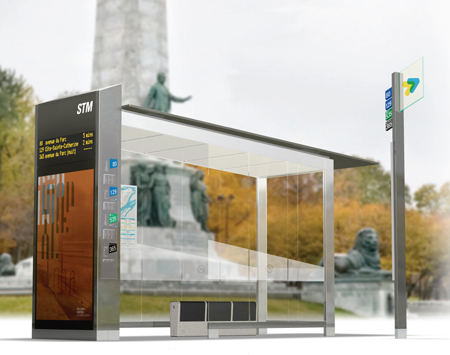small urban things
 Projet : Concept développé par Leblanc + Turcotte + Spooner. Crédit photo : Leblanc + Turcotte + SpoonerMontréal recently held a competition for the design of new bus shelters. The design chosen was by Leblanc + Turcotte + Spooner. The press release outlines a way of thinking about urban design that all cities might adopt.
Projet : Concept développé par Leblanc + Turcotte + Spooner. Crédit photo : Leblanc + Turcotte + SpoonerMontréal recently held a competition for the design of new bus shelters. The design chosen was by Leblanc + Turcotte + Spooner. The press release outlines a way of thinking about urban design that all cities might adopt.
Montréal has 'made a firm commitment to making such competitions a widespread practice, promoting innovation and excellence in architecture and design, and continuing to position Montréal as a UNESCO City of Design. This project is a concrete illustration of our willingness to ensure that Montréal’s designers play a paramount role in shaping our city’s future. This design competition is one of the five shukôs, or creative challenges, issued on September 30, 2008, by the Mayor of Montréal. Besides providing tangible impetus for creativity in design and architecture, it aims to widen access to public design commissions to greater numbers of practitioners.'
The Ville de Montréal has within it the Design Montréal office, which runs the competitions; its mission is to improve design throughout the city and to position Montréal as 'a city of design'. This is how a city uses its designers and architects.
The bus shelter competition was a public, not a private, initiative involving the Ville de Montréal, the Société de transport de Montréal and the Québec Department of Culture, Heritage and the Status of Women.
The shelter is good too: free standing, modular, a communications column containing digital components and back-lit ads, and an integrated solar system freeing the shelters from dependence on the grid. The bench is interesting - more like a perch. Calgary's latest bus shelters have seats divided by a small handrail, presumably to make it impossible to sleep on the bench – a nice little punitive touch. In Austin, Texas, the downtown bus stops had a row of flip down seats on the side of the building lining the sidewalk.
Bus shelters are small projects that look after the street. They project the way a city looks after its people.
